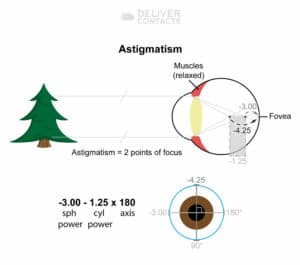Dr. Edwin Wallington graduated high school from North Branch, Michigan in 1990. He then attended Ferris State University from 1990-1993, before going to Illinois College of Optometry in Chicago, Illinois from 1993-1997. He graduated with his Doctor of Optometry degree and worked with various optical companies including D.O.C., Rx&Specs, and Lenscrafters from 1997-1999, before opening Visual Eyes in Lapeer, Michigan with his wife, Dr. Sonya Wallington, in 1999.
They currently still practice at Visual Eyes. In May of 2021, Ed & his wife also started Deliver Contacts (aka DeliverContacts.com) and then "Your Eye Show" in March of 2023, an educational weblog.
- Doctor of Optometry
- Optometry
- Contact Lens Prescriptions & Benefits
- Eye Health
- Ferris State University
- Illinois College of Optometry
More from Dr. Edwin R. Wallington, OD
In addition to being co-owner of Deliver Contacts, Dr. Edwin is also co-owner of Visual Eyes in Lapeer, Michigan and hosts "Your Eye Show", an educational weblog covering contact lenses, ocular health, and all things eye related.
Get in Touch
Articles by Edwin
Fovea Defined The word “fovea” means “depression” or “pit”. There is also a tiny point (about the size of tip of a pin) on our retina in the back of our eye (directly behind the pupil) called the fovea, because it is an area of the macula that is depressed…
Our body has five main senses: The eye is the vision sensory organ. What actually perceives this sensory information, however, is the brain. All of our sense organs report to the brain for processing, understanding, considering, and responding to the information sent. The brain is also responsible for all of…
How Does the Eye Work? Light is divergent in nature. Which means that any light that enters into our eye is “out-of-focus” and needs to be brought back into FOCUS. The cool thing about the eye is that the front one-third of the eye has the potential to converge light…
Removing contact lenses from your eyes tends to be easier than putting them in. The goal when inserting a lens is creating a seal with the rim of the lens on the eye, while the goal of removing it is safely breaking this seal. There are many ways to go…
The biggest hurdle that you will have wearing contact lenses is learning to handle them, especially putting them in. Long time wearers make it look easy, as if they could flip the contact lens into the air like a coin with their thumb and catch it on their eye perfectly…
What is Nearsightedness (Myopia)? Myopia, also known as nearsightedness, is an optical condition of the eye that causes vision to be blurry when looking at things that are far away. Therefore, myopia is also referred to as being nearsighted, as in, “I have near sight. I can see things that…
What is Farsightedness (Hyperopia)? Hyperopia (also known as Hypermetropia or Farsightedness) is an optical condition of the eye that makes focusing far away difficult, but it makes focusing up close even more difficult. People who have hyperopia have greater difficulty focusing up close, so they are better (in comparison) at…
What is Presbyopia? Presbyopia is the gradual inability for the eye to focus that occurs as we age, due to loss of flexibility of the crystalline lens within the eye. The lens is made of elastic proteins that give flexibility to the lens, but as we get older, the elastic…
What is Astigmatism? Astigmatism is an optical condition of the eye that causes vision to be blurry when looking at things that are either far away or up close due to having multiple points of focus. Other refractive error problems (such as nearsightedness and farsightedness) are caused by light being…
In order for us to see, light enters the eye through the cornea, goes through the pupil, and then must focus perfectly on a single pinpoint spot on the retina in the back of the eye called the fovea. If light does not focus on the fovea, then that eye…








